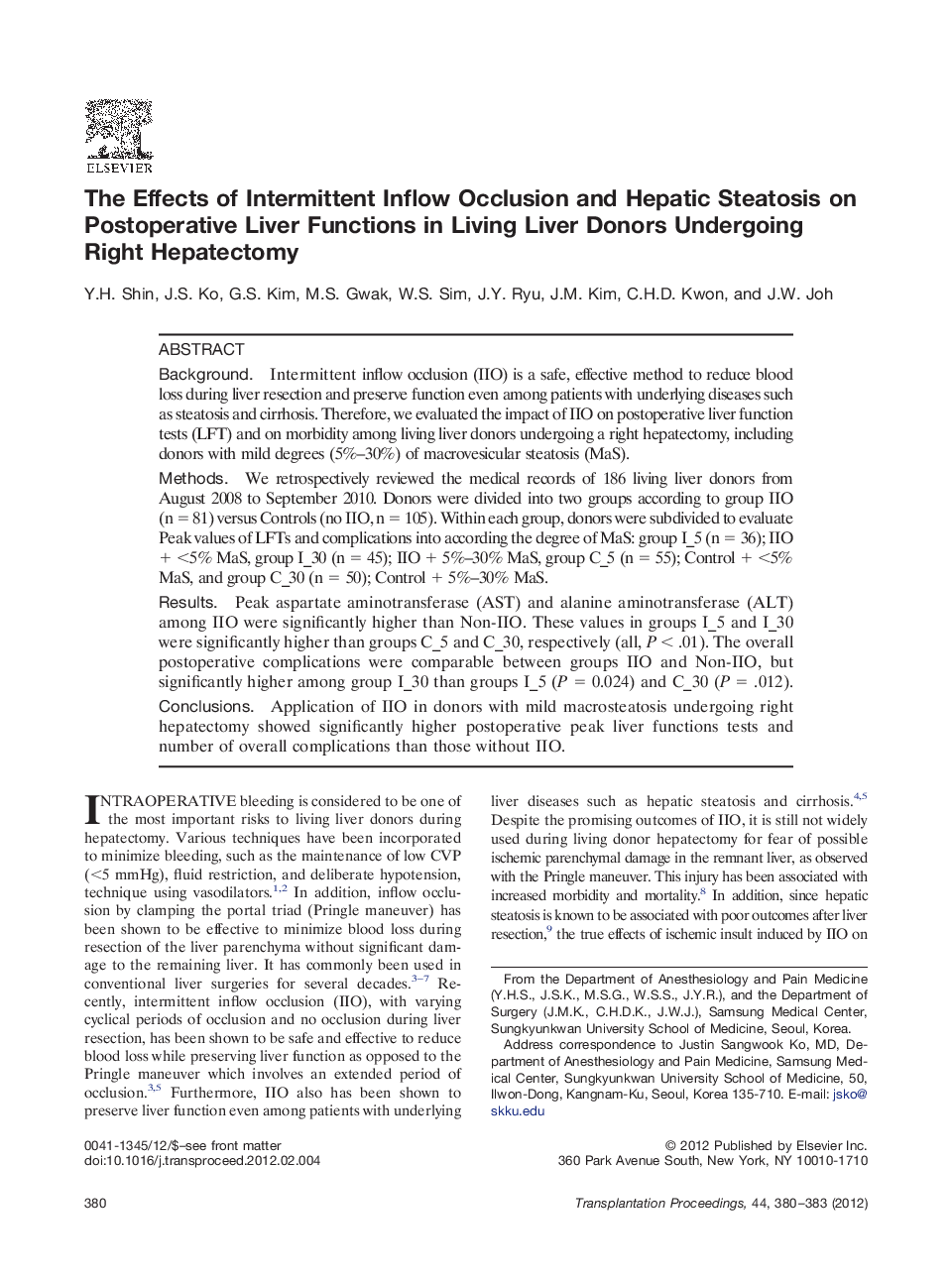| Article ID | Journal | Published Year | Pages | File Type |
|---|---|---|---|---|
| 4260353 | Transplantation Proceedings | 2012 | 4 Pages |
BackgroundIntermittent inflow occlusion (IIO) is a safe, effective method to reduce blood loss during liver resection and preserve function even among patients with underlying diseases such as steatosis and cirrhosis. Therefore, we evaluated the impact of IIO on postoperative liver function tests (LFT) and on morbidity among living liver donors undergoing a right hepatectomy, including donors with mild degrees (5%–30%) of macrovesicular steatosis (MaS).MethodsWe retrospectively reviewed the medical records of 186 living liver donors from August 2008 to September 2010. Donors were divided into two groups according to group IIO (n = 81) versus Controls (no IIO, n = 105). Within each group, donors were subdivided to evaluate Peak values of LFTs and complications into according the degree of MaS: group I_5 (n = 36); IIO + <5% MaS, group I_30 (n = 45); IIO + 5%–30% MaS, group C_5 (n = 55); Control + <5% MaS, and group C_30 (n = 50); Control + 5%–30% MaS.ResultsPeak aspartate aminotransferase (AST) and alanine aminotransferase (ALT) among IIO were significantly higher than Non-IIO. These values in groups I_5 and I_30 were significantly higher than groups C_5 and C_30, respectively (all, P < .01). The overall postoperative complications were comparable between groups IIO and Non-IIO, but significantly higher among group I_30 than groups I_5 (P = 0.024) and C_30 (P = .012).ConclusionsApplication of IIO in donors with mild macrosteatosis undergoing right hepatectomy showed significantly higher postoperative peak liver functions tests and number of overall complications than those without IIO.
